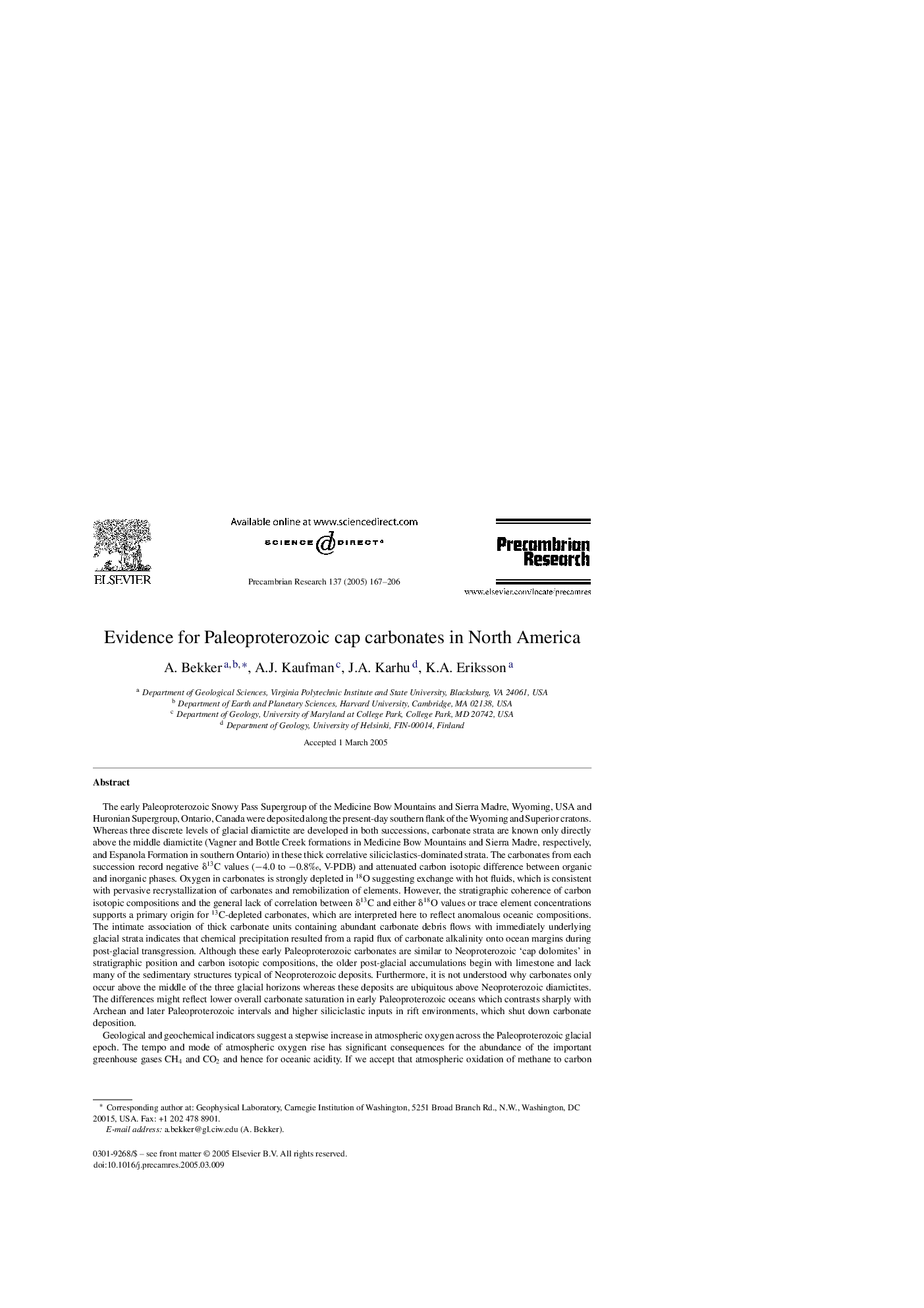| Article ID | Journal | Published Year | Pages | File Type |
|---|---|---|---|---|
| 9533596 | Precambrian Research | 2005 | 40 Pages |
Abstract
Geological and geochemical indicators suggest a stepwise increase in atmospheric oxygen across the Paleoproterozoic glacial epoch. The tempo and mode of atmospheric oxygen rise has significant consequences for the abundance of the important greenhouse gases CH4 and CO2 and hence for oceanic acidity. If we accept that atmospheric oxidation of methane to carbon dioxide resulted in each of the three discrete glaciations, it implies that atmospheric CH4 remained high throughout the interval and that pulsed oxidation events, plausibly linked to higher primary productivity and lower hydrothermal activity, led to surface refrigeration. If correct, the unique presence of cap carbonate above the middle Paleoproterozoic diamictite may reflect an appropriate balance of CO2 and CH4 sufficient to provide enough alkalinity to seawater through silicate weathering, but not so high that carbonate preservation would be inhibited by enhanced acidity.
Related Topics
Physical Sciences and Engineering
Earth and Planetary Sciences
Geochemistry and Petrology
Authors
A. Bekker, A.J. Kaufman, J.A. Karhu, K.A. Eriksson,
